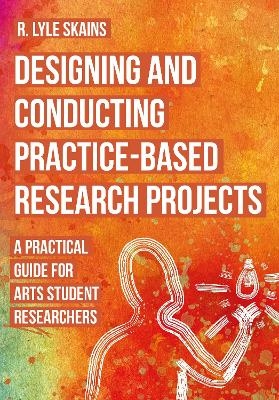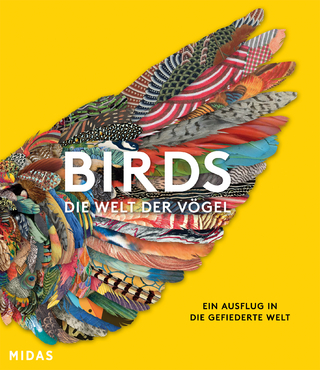
Designing and Conducting Practice-Based Research Projects
Intellect Books (Verlag)
978-1-78938-932-6 (ISBN)
This is a textbook aimed primarily at upper undergraduate and Master’s students undertaking practice-based research in the arts, and includes practical guidance, examples, exercises, and further resources.
The book offers definitions and a brief background to practice-related research in the arts, contextualization of practice-based methods within that frame, a step-by-step approach to designing practice-based research projects, chapter summaries, examples of practice-related research, exercises for progressing methods design and evaluating research approach, and lists for further reading. This textbook can serve as the foundation for a wider, online “living” textbook for practice-related research in the arts.
Dr. Lyle Skains conducts practice-based research in Creative Digital Writing and Science Communication, exploring the processes of writing, reading/playing, publishing digital and transmedia narratives, and how these can be used for health and science communication. She has published a key resource on practice-based research in the Journal of Media Practice and Education.
List of Figures
List of Tables
Acknowledgements
List of Abbreviations
Chapter 1. Introduction
Why this book
Who this book is for
How to use this book
Key elements of the book
Recommended approach
PART I: PRACTICE AND KNOWLEDGE
Chapter 2. Practice-Related Research: What Is It, Who Does It, and Why?
A brief history of research
Practice-related research: Definitions and approaches
Practice-as-research
Practice-and-research
Practice-led research
Practice-based research
Practice-based research knowledge
Explicit
Tacit (or Implicit)
Theoretical
Dialectical
Contextual
Conceptual
Conclusion
Exercise: Brainstorming a project
Brainstorming methods
Chapter 3. Critical and Contextual Research: Your Artistic Domain and Field
Understanding and contextualizing research
Special contexts of creative research
Evaluating research resources
Primary sources
Secondary sources
Popular sources
Reliability checklist
Search strategies
Decolonizing research
Knowing your domain: Annotated bibliographies and literature reviews
Annotated bibliography
Literature review
Points to include
How to set it out
What to avoid
Tips & tricks: Taking and organizing research notes
Tips & tricks: Reading academic texts with minimal weeping
Why bother?
What’s the point of SQ3R?
S is for scan
Q is for question
R1 is for read
R2 is for recite
R3 is for review
Conclusion
Exercise: Annotated bibliography
Chapter 4. PBR-Relevant Methods
Empirical research
Social science methods
Reflection
Auto-ethnomethodology
Surveys
Interviews and focus groups
Qualitative analysis
Critical analysis
Textual analysis/close readings
Media-specific analysis
Literary analysis
Multimodal analysis
Discourse analysis
Interdisciplinary approaches
Conclusion
Exercise: Determining relevant research methods
Planned project methodology
Optional ethnographic methodology
PART II: DOING YOUR RESEARCH PROJECT
Chapter 5. Designing Your Research Project
An integrated approach to practice-based research
Establish the research problem
Conduct background research
Conduct empirical research
Continue contextual research
Analyze the creative artefact and research logs
Form argument/discussion
Write the exegesis
Planning your project
Formulating your research question
Troubleshooting: If you’re still stumped on a research question
Determining your research methodology
PBR area: Creator/practice/artefact
Analysis methods
Ethnographic methods
Creating a workplan
Tips and tricks: Keeping to your workplan
Tips and tricks: Creating a task list
Writing a research proposal
Proposal length
Parts of the proposal
Tips and tricks: Research proposals
Conclusion
Exercise: Define your research question
Exercise: Outlining your methodology
Exercise: Creating a project workplan
Chapter 6. Conducting your research
Collect your data
Knowing when to move on from background research
Creative practice
Troubleshooting: Creative blocks
Keeping a research log
The role of exploration and serendipity
Continuing your contextual research
Project management
Time management
Stage 1: Determining your available time
Stage 2: Developing a study strategy
Stage 3: Defeating procrastination
Document management
Resource management
Reference resources
Resources are people, too
Troubleshooting: Managing your supervisory relationship
Analysis
Tips and tricks: Recognizing research insights
Conclusion
Exercise: Keeping your research focused
Project aims and objectives
Aims
Objectives
Background and rationale
Methodology
Current state of project
Expected outline of project
Timetable of work to completion
Other notes
Chapter 7. Writing your exegesis
Forming your argument
Outlining your thesis
What a practice-based thesis looks like
The abstract
The introduction: Six actions
Action 1: Subject
Action 2: Purpose
Action 3: Argument
Action 4: Background and context
Action 5: Justification and importance
Action 6: Forecast the content and structure
Additional consideration: Methodology
The body
Body patterns of arrangement
Body paragraphs
The conclusion
Action 1: Make an obvious transition
Action 2: Restate your main argument/thesis
Action 3: Summarize your key points/sub-arguments
Action 4: Restress the importance/significance of your argument
Action 5: Look to the future
Back matter
Writing the exegesis
Integrating analysis into your thesis discussion
Description vs. analysis
Support for analysis
Writing effectively
Including research and quotations
When to reference
Integrating in-text citations
How to paraphrase properly
Conclusion
Exercise: Outline your exegesis
Chapter 8. Conclusion
Bibliography
Appendices: Resources
A. Useful research tools
Notetaking
Word processor/composing programs
Reference managers
Project management apps
Time management apps
Focus apps
B. Glossary
C. Further Reading
Index
| Erscheinungsdatum | 21.09.2023 |
|---|---|
| Zusatzinfo | 4 Tables, black and white; 6 Figures |
| Verlagsort | Bristol |
| Sprache | englisch |
| Maße | 170 x 244 mm |
| Gewicht | 398 g |
| Themenwelt | Kunst / Musik / Theater |
| ISBN-10 | 1-78938-932-1 / 1789389321 |
| ISBN-13 | 978-1-78938-932-6 / 9781789389326 |
| Zustand | Neuware |
| Informationen gemäß Produktsicherheitsverordnung (GPSR) | |
| Haben Sie eine Frage zum Produkt? |
aus dem Bereich


